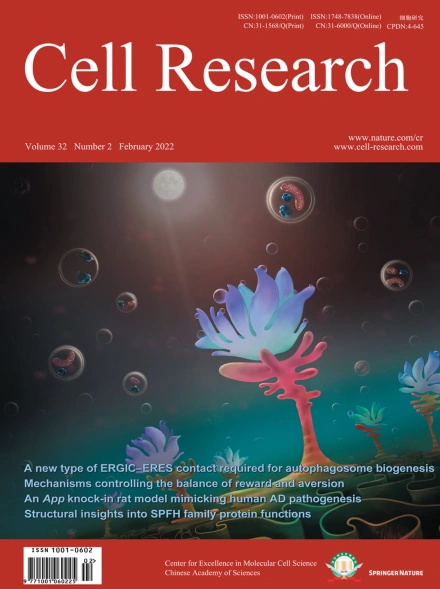
Advanced Search
Submit Manuscript
Advanced Search
Submit Manuscript
Volume 32, No 2, Feb 2022
ISSN: 1001-0602
EISSN: 1748-7838 2018
impact factor 17.848*
(Clarivate Analytics, 2019)
Volume 32 Issue 2, February 2022: 214-217
Structural basis of acyl-CoA transport across the peroxisomal membrane by human ABCD1
Rong Wang1 , Yu Qin1 , Xiaochun Li1,2,*
1Department of Molecular Genetics, University of Texas Southwestern Medical Center, Dallas, TX, USADear Editor,
ABCD1, a member of the subfamily D of ABC transporters, participates in the transport of various fatty acid-CoA derivatives or very long-chain fatty acids (VLCFA) into the peroxisome and is essential for peroxisomal metabolism and lipid homeostasis.1 Dysfunction of human ABCD1 is associated with neurodegenerative diseases, including X-linked adrenoleukodystrophy (X-ALD).1 The molecular basis of substrate recognition and transport by human ABCD1 remains unknown. To date, four ABCD members have been identified in mammals.1 As exporters, ABCD1–3 transport fatty acid-CoA derivatives or VLCFA from the cytosol into peroxisomes for β-oxidation with substrate preferences.2 Their N-terminal regions, which is recognized by pEX19, play a role in facilitating the trafficking of ABCD1–3 to the peroxisome. In contrast, ABCD4 lacks this region, and functions as an importer to transport Vitamin B12 from the lysosome to the cytosol.1 ABCD2, ABCD3 and ABCD4 display 65%, 40% and 28% sequence identity with ABCD1 (Supplementary information, Fig. S1). All ABCD transporters are half transporters and function as homodimers or heterodimers. With the exception of the structure of ATP-bound ABCD4,3 no structural information is available about how the D family ABC transporters recognize and transport their substrates. Here, we report the structures of oleoyl-CoA-bound ABCD1 with the catalytic residue Glu630 in the nucleotide binding domain (NBD) substituted by glutamine (ABCD1EQ) and ATP-bound ABCD1EQ (Fig. 1). Most recently, cryo-EM structures of ABCD1 in different conformations have also been reported in bioRxiv.4,5,6
https://doi.org/10.1038/s41422-021-00585-8